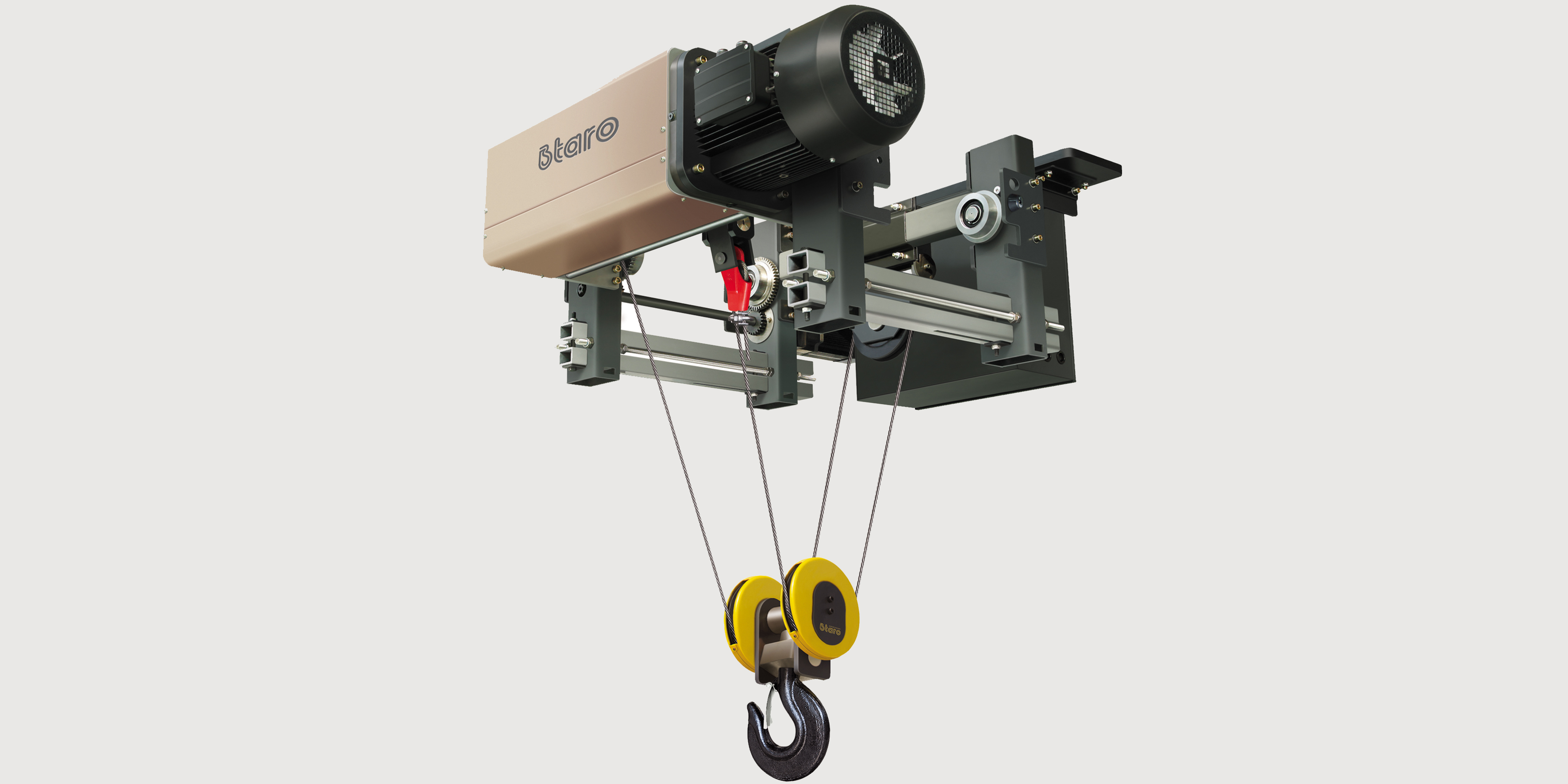
Look, I’ve been slinging loads with electric hoists for 30 years—seen enough close calls to know: this gear doesn’t care if you’re in a hurry. It runs on rules, and the numbers matter. Let me break down what actually keeps you safe, no fluff.
1. Before You Hit “Up”: Check the Stuff That Breaks First
You wouldn’t drive a car with bad brakes, right? Same here.
- Hooks: I once watched a 5-ton hook snap because the boss “didn’t see the crack.” Rule: If the wear on that critical spot is more than 10% of its original size, or there’s a crack bigger than a hair (0.2mm+), bin it. And if the hook mouth’s opened up 15% wider than when it was new? Replace it. No “maybe” here.
- Wire rope or chain: For rope (6×37 type), count the broken wires. More than 12 in one twist (cross lay) or 18 (parallel lay)? Trash it. If the rope’s skinnier than 93% of its original diameter, it’s done. Chains? If a link’s worn down 8% or stretched 3% longer than new, swap the whole set—don’t just replace one link.
- Brakes: Grab the drum and spin it by hand. If it turns more than half a turn before stopping, the brake’s shot. Adjust the gap to 0.5–1mm—I keep a feeler gauge in my tool belt for this.
2. Safety Gizmos: They’re Not Just for Show
- Limit switches: The upper one? Make sure there’s at least 1/3 of the drum’s length between the hook and the drum when it cuts power. Too close, and you’ll crush the rope. Lower switch? Must kick in 300mm above the ground—I mark this with tape. Once saw a guy burn out his motor ’cause his lower switch failed, and the rope wrapped itself into a bird’s nest.
- Overload limiter: Set it to 110% of the hoist’s rated capacity. If you lift more than that, it should shut down in 3 seconds flat. I test mine weekly with a 1-ton weight on my 10-ton hoist—if it doesn’t beep and cut power, I call the shop.
3. The Little Things That Trip You Up
- Power: These hoists are divas about voltage. If it’s a 380V unit, keep it between 361–399V. Too low, and the motor burns out. And check the ground—use a meter. If it’s over 4 ohms, you’re asking for a shock.
- Weather: Wind over 10.8m/s (that’s a 6 on the Beaufort scale—branches start swaying hard)? I shut it down. Cold below -20℃ or hot over 40℃? Drop the load by 20%—motors hate extremes. If the motor’s hotter than 70℃ to the touch? Shut it off, let it breathe.
4. When You’re Lifting: Slow and Steady Wins
- Test lift every time: Hoist the load 10–30cm up, hold it 10 seconds. Jiggle the “down” button—does it lock? Move it a foot left/right—any weird noises? I skipped this once, and a chain link jammed. The load dropped 18 inches. Never again.
- No dumb moves:
Don’t pull sideways. A 5° angle on a 3-ton load? That rope’s suddenly pulling 3.2 tons. Seen ropes snap from that.
Don’t overload. A 3-ton hoist can’t do 3.1. I saw a coupling snap clean off lifting 6 tons with a 5-ton unit—lucky no one was under it.
Don’t speed. If you crank the lift speed up 10% over rated, the brake can’t keep up.
5. After the Job: Treat It Like Your Truck
Lower the hook to 2m+ off the ground so no one walks into it.
Let the rope/chain relax—don’t leave it tight, or it’ll take a set.
Wipe down the controls, coil the cable so it doesn’t get run over.
Grease the rope weekly (use stuff that melts above 100℃) and oil the chain every shift—pivot points first.
Thirty years—never a serious accident. Why? ’Cause I follow the numbers, and I don’t cut corners. This gear’s simple, but it’s unforgiving. Respect the limits, and it’ll respect you.


